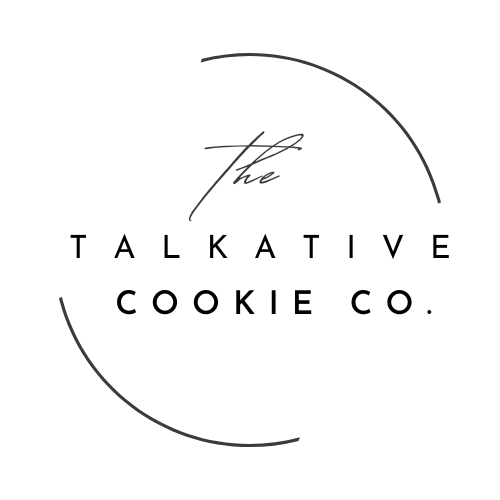Imagine stepping into a carnival, the air filled with the sweet aroma of spun sugar, and colorful sticks of cotton candy twirling between eager hands. Have you ever wondered how this delightful treat came to be? Prepare to be transported through time as we delve into the fascinating history of cotton candy. From its humble origins at fairs in the late 19th century to becoming an iconic symbol of fun, this sugary confection has captivated generations with its fluffy texture and sugary sweetness. Join us on this nostalgic journey as we explore the origins, innovations, and enduring popularity of cotton candy.

Origin of Cotton Candy
Invention of the spinning machine
The origin of cotton candy can be traced back to the invention of the spinning machine. This machine, created by dentist William Morrison and confectioner John C. Wharton in 1897, revolutionized the way sugar was spun into a sweet treat. The spinning machine allowed for sugar to be melted and then spun into thin strands, creating the foundation for what would later become cotton candy.
Introduction of fairy floss at the World’s Fair
The introduction of fairy floss at the World’s Fair in St. Louis in 1904 marked a pivotal moment in the history of cotton candy. It was at this event that the term “fairy floss” was coined, describing the light and fluffy texture of the sugary treat. The debut of fairy floss at the World’s Fair showcased the mesmerizing process of spinning sugar and captured the attention and fascination of fairgoers.
Early Versions of Cotton Candy
The introduction of colored cotton candy
In the early days, cotton candy was typically only available in its natural color of white. However, as the popularity of this sugary delight grew, confectioners began experimenting with different colors. By adding food coloring to the sugar mixture, vibrant and eye-catching hues were achieved, making colored cotton candy a hit among children and adults alike.
The machine-spun version of cotton candy
Before the invention of the spinning machine, cotton candy was traditionally made by hand. Confectioners would heat sugar and then carefully pull and stretch it into thin strands. However, with the introduction of the machine-spun version of cotton candy, the process became much more efficient and consistent. The machine allowed for larger quantities of cotton candy to be produced, making it easily accessible to a wider audience.
Cotton Candy’s Rise in Popularity
Introduction of cotton candy at circuses
One significant factor that contributed to the rise in cotton candy’s popularity was its introduction at circuses. Beginning in the early 20th century, cotton candy became a staple treat at circus events. The whimsical and whimsy-filled atmosphere of the circus, combined with the mesmerizing sight of the spinning sugar, captivated audiences and helped cement cotton candy’s reputation as a beloved sweet treat.
Cotton candy as a staple at amusement parks
Following its success at circuses, cotton candy soon found its way into amusement parks. Whether at roller coasters, ferris wheels, or carnival games, cotton candy became synonymous with the joy and excitement of these entertainment destinations. Its fluffy texture and vibrant colors complemented the festive atmosphere, making it a must-have snack for park visitors of all ages.
Evolution of the Name
Fairy Floss becomes Candy Floss in the UK
While cotton candy is commonly referred to as “fairy floss” in many parts of the world, the term “candy floss” gained popularity in the United Kingdom. The name change reflects the language nuances and cultural preferences of different regions. Despite the variation in terminology, the sweet and sugary delight remains the same, bringing joy to those who indulge in its sugary goodness.
Cotton Candy becomes the preferred term in the US
In the United States, “cotton candy” is the preferred term for this sugary treat. The name perfectly captures the fluffy and cotton-like texture of the spun sugar. It is a term that has become deeply ingrained in American culture and is synonymous with fun-filled events and childhood memories. No trip to the fair or carnival is complete without indulging in a cloud of sweet cotton candy.

Cotton Candy around the World
Cotton candy variations in different countries
The love for cotton candy extends far beyond the borders of the United States and the United Kingdom. Different countries have their own versions and variations of this sweet treat. In India, for example, cotton candy, also known as “pulled sugar candy,” is often made with jaggery, a type of unrefined sugar. In China, cotton candy is sometimes mixed with flavors like green tea or sesame, adding a unique twist to the classic treat.
Cultural significance of cotton candy in various regions
Cotton candy holds cultural significance in many regions around the world. In India, for example, cotton candy is often associated with festive celebrations and religious events. It is not uncommon to see vendors selling cotton candy during weddings, birthdays, and other special occasions. Similarly, in Brazil, cotton candy is often enjoyed during Carnival, adding to the joyful and colorful atmosphere of the festivities.
Cotton Candy in Popular Culture
Portrayal of cotton candy in movies and TV shows
Cotton candy has made numerous appearances in popular culture, both in movies and TV shows. Its fluffy and vibrant presence serves as a visual representation of joy and innocence. In films like “Willy Wonka & the Chocolate Factory” and “The Greatest Showman,” cotton candy is showcased to create a sense of wonder and whimsy, taking the audience on a nostalgic journey back to childhood.
Cotton candy in literature and art
Cotton candy’s allure and whimsical nature have also been captured in the world of literature and art. From children’s books illustrating colorful carnivals to paintings depicting joyous scenes at amusement parks, cotton candy often features as a symbol of happiness and carefree moments. Its fluffy appearance and sugary sweetness evoke a sense of nostalgia and innocence.

Health concerns surrounding Cotton Candy
Sugar content and its impact on health
As with any sugary treat, cotton candy does come with health concerns, primarily due to its high sugar content. Consuming excessive amounts of sugar can lead to various health issues, such as tooth decay, weight gain, and an increased risk of developing chronic conditions like diabetes and heart disease. Moderation is key when enjoying cotton candy, and it is important to balance indulgence with a healthy lifestyle.
Potential choking hazards of cotton candy
Another health concern related to cotton candy is the potential choking hazard it poses, particularly for young children. The fluffy and soft texture of cotton candy can easily dissolve in the mouth, making it less likely to cause choking. However, if a large chunk is bitten off and swallowed without properly chewing it, it can pose a risk. It is important to supervise young children while they enjoy cotton candy to ensure their safety.
Innovations in Cotton Candy
New flavors and colors of cotton candy
In recent years, there has been a surge in innovations when it comes to cotton candy flavors and colors. Confectioners have started experimenting with unique flavor combinations, ranging from traditional favorites like strawberry and blue raspberry to more adventurous options like lavender and champagne. Similarly, the color palette of cotton candy has expanded beyond the classic pink and blue, with vibrant and creative hues becoming increasingly popular.
Cotton candy as an ingredient in other desserts
Cotton candy’s versatility extends beyond being a standalone treat. It has also found its way into other desserts and confections. From being used as a decorative element on cakes and cupcakes to being incorporated into ice creams and milkshakes, cotton candy adds a whimsical and sweet touch to various treats. Combining the nostalgia-inducing flavors and textures of cotton candy with other desserts creates a delightful and unique culinary experience.

Cotton Candy as a Symbol
Cotton candy symbolism in celebrations and events
Cotton candy holds symbolic meaning in various celebrations and events. Its presence often signifies joy, happiness, and the carefree nature of childhood. Whether it’s a birthday party, a wedding reception, or a carnival, the inclusion of cotton candy can enhance the festive atmosphere and create a sense of nostalgia. Its ethereal appearance and sugary sweetness evoke memories of simpler times and carefree moments.
Cotton candy as a representation of nostalgia
For many, cotton candy acts as a powerful trigger of nostalgia. The mere sight, smell, and taste of cotton candy can transport individuals back to their childhood, eliciting feelings of joy and innocence. Whether it’s revisiting the excitement of a trip to the amusement park or reliving memories of past celebrations, cotton candy has the ability to evoke a deep sense of nostalgia, making it more than just a sugary treat.
Future of Cotton Candy
Potential advancements in cotton candy technology
As technology continues to advance, there is a possibility for further innovations in cotton candy production. From new spinning machines that can create even more intricate and artistic designs to automated processes that streamline production, the future holds exciting possibilities. Additionally, advancements in ingredient options, such as alternative sweeteners, may lead to healthier versions of cotton candy without compromising on taste.
Cotton candy trends and predictions for the future
Looking ahead, cotton candy is likely to continue captivating the hearts and taste buds of people around the world. With an increasingly diverse range of flavors and colors, the appeal of cotton candy will only grow stronger. As more individuals seek unique and Instagram-worthy treats, cotton candy will flourish as a popular choice. Its ability to evoke happiness, nostalgia, and a sense of wonder ensures that cotton candy will remain a beloved treat for generations to come.


